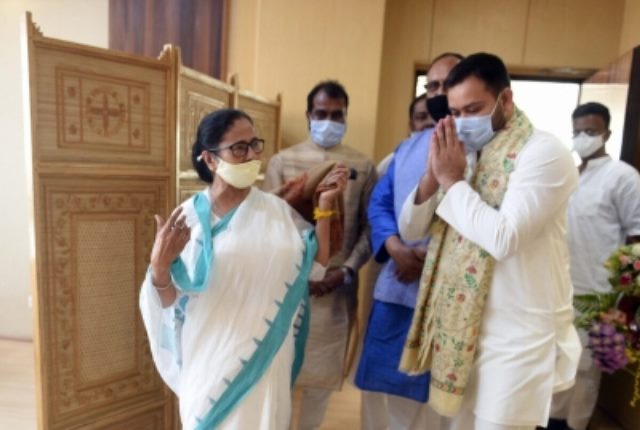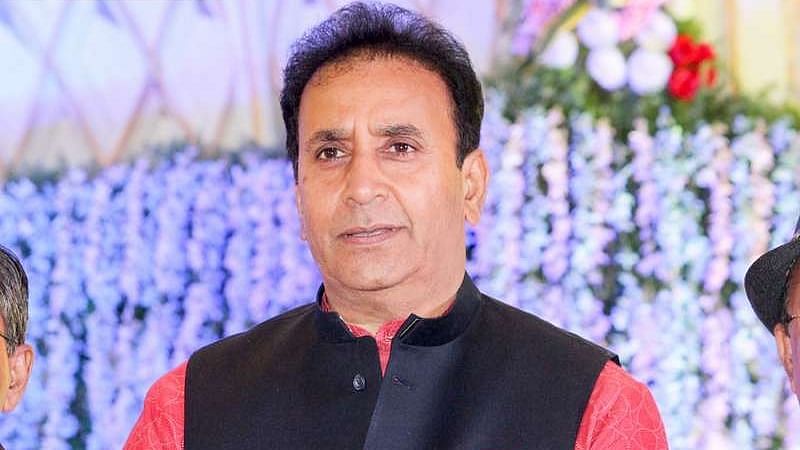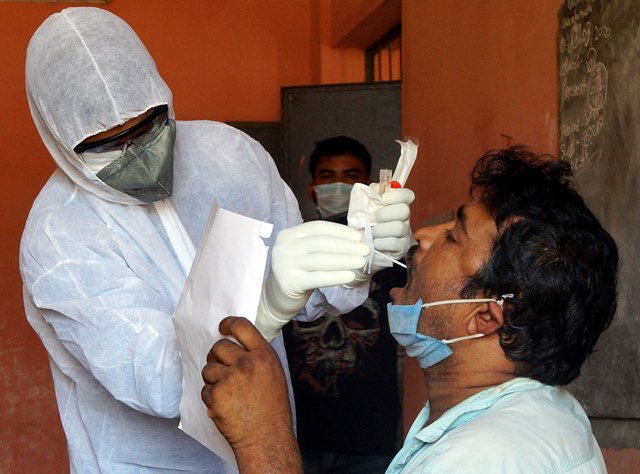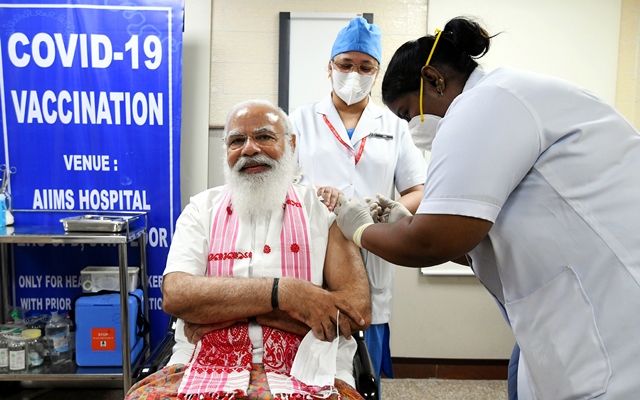Rashtriya Janata Dal (RJD) leader Tejashwi Yadav on Monday met West Bengal chief minister Mamata Banerjee and offered his full support to her in the coming assembly polls in the state.
Addressing the media after meeting the TMC supremo at Nabanna, the state secretariat here, Tejashwi told reporters, “It is Lalu ji’s decision to provide full support to Mamata Ji. Our first priority is to stop BJP from coming to power in Bengal.”
He also took a jibe at the “baraat” of BJP leaders in the recent weeks arriving in West Bengal to campaign for the party and questioned their ability to run the government in the state better than Chief Minister Mamata Banerjee.
“BJP is such a big party. The BJP has brought a “Baarat” (procession) of all the union ministers to West Bengal. Who is their groom? Name a single BJP leader who is more experienced than Mamta Banerjee in running the government. Will you hand over power to a leader who does not have any experience?” Tejashwi Yadav asked while speaking to ANI.
“The biggest thing is support to courage, Tejashwi bhai is fighting, so we are fighting and vice versa, said the West Bengal Chief Minister and TMC chief Mamata Banerjee speaking to reporters after the meeting here at Nabanna, the state secretariat.
[{a26f8af9-e486-45d0-a42a-8088539762c4:intradmin/EvZAk4sVkAEZn20.jpg}]
Tejashwi Yadav was also scheduled to to chair election committee’s meeting today at her residence in Kalighat.
[{a2b545b9-4217-4980-8dcf-e9cf1900e7d8:intradmin/EvY80dhUUAEvIiR.jpg}]
Yadav had not attended the brigade ground meeting called by the left, Congress and ISF in Kolkata on Sunday.
West Bengal will witness eight-phased Assembly polls beginning March 27. The counting of votes will take place on May 2.
While Mamata Banerjee is seeking her third consecutive term, BJP has set a target of winning 200 seats in the 294-member state Assembly. Congress and the Left have stitched the alliance for the polls and had already finalised the seat-sharing agreement.
With the announcement of the election schedule, the Model Code of Conduct has come into force in the state. (ANI)








